I was recently having a conversation with a friend who spends far too much time watching cable news, he was obviously upset. “We are living in crazy times,” he said. He went on to explain how current events are unprecedented, his surety that the US would be embroiled in the civil war by the end of the year, and that there would be a major shift in geopolitics happening soon. His points touched on everything from the pandemic, to politics, to religion.
I listened, it was easy to understand where he is coming from, US news coverage has been
especially gloomy over the last few years and he is far from alone in feeling this way. According to a study published in
The Lancet, anxiety, and depression climbed by over 25% globally during the pandemic. As a history nerd, it took all of my self-control to not point out that the current state of the world is indistinguishable from any other point in modern history, the only difference is we are living in it, and don’t see today’s events through the filtered lens of nostalgia.
If you are around my age, you likely have fond memories of the 1990s, for me, it is mostly summer camps, drop-top Fox-body Mustangs, and hanging out with friends at the Ontario Mills Mall. But look at any year from your childhood and you’ll find headlines not all that different from today. Go back just 30 years to 1992, Russia was targeting US cities with nuclear weapons, the Bosnian War commences, and the LA Riots result in 63 deaths and over $1 billion dollars in damage. But for many of us that lived through the 90s, we think of Reebok Pump sneakers, Snoop Doggy Dogg, and Auntie Anne’s pretzels at the mall.
In the book of Ecclesiastes, written sometime before 931 BC, we are told by King Solomon that “What has been is what will be, and what has been done is what will be done, and there is nothing new under the sun.” Essentially, the times we are living in are not special and by extension, we are not special, shocking words, I know, for those of us from the participation trophy generation.
Students of history, know that King Solomon was right about the cyclical nature of the world, but for those who didn’t pay attention in class, it can seem that the world has never been more on edge. We watch man-on-the-street interviews comedically highlight the average American’s lack of knowledge on the subjects of history, geography, and science. So is it any wonder that headlines about a natural disaster, political unrest, wars, disease, and economic strife keep many people up at night?
Let me assure you that life has always been this way, that civilization has always been on the brink, and that we are in fact living in what will one day be looked back with nostalgia as the good ol’ days. Instead of looking back just 30 years, let’s go back 100 years to 1922, to a world that looks very much like our own, the parallels are stunning, and perhaps like Winston Churchill said “The longer you can look back, the farther you can look forward.”
World War I had ended four years earlier, “the war to end all war” as it was called, but the world is still at war, the Greco-Turkish War still raged on, civil wars in Russia, Ireland, and Paraguay were intensifying, and the British faced conflicts across their empire. With one in four people on earth being under British rule, the Crown was engaged in a range of conflicts from uprisings in Somaliland to assassinations in the streets of London by the newly formed Irish Republican Army, the world was very much still at war everywhere except the United States.
The world then, much like now, was entering a post-pandemic era, learning how to adapt to a virus that was now
endemic. It is estimated that the “Spanish flu” claimed between 50 and 100 million people from 1918 to 1920, some populations, like the indigenous people of Bristol Bay, Alaska lost 40 percent of their total population to the virus. A story from
San Francisco Examiner shares updated death counts on the same page as an update about the latest meeting of the Anti-Mask League.
This interwar period, often shown through the American lens of the Roaring 20s, was a time of incredible economic and technological growth, mass production made luxury items like cars, radios, and aviation more accessible, and tax cuts fueled investment. While the world was in conflict, America settled back into a period of isolation and prosperity, Warren Harding won the 1920 election on an “America First” platform a policy that kept the US out of major military conflicts until the second world war. Harding would be the first President to have his voice transmitted over the radio and was the first to have a radio installed at the Whitehouse.
While the US wasn’t out starting any new wars, America First, also meant that the US was occupying Germany’s Rhineland, the Caucasus, the Philippines, the Dominican Republic, Haiti, Cuba, and Nicaragua.
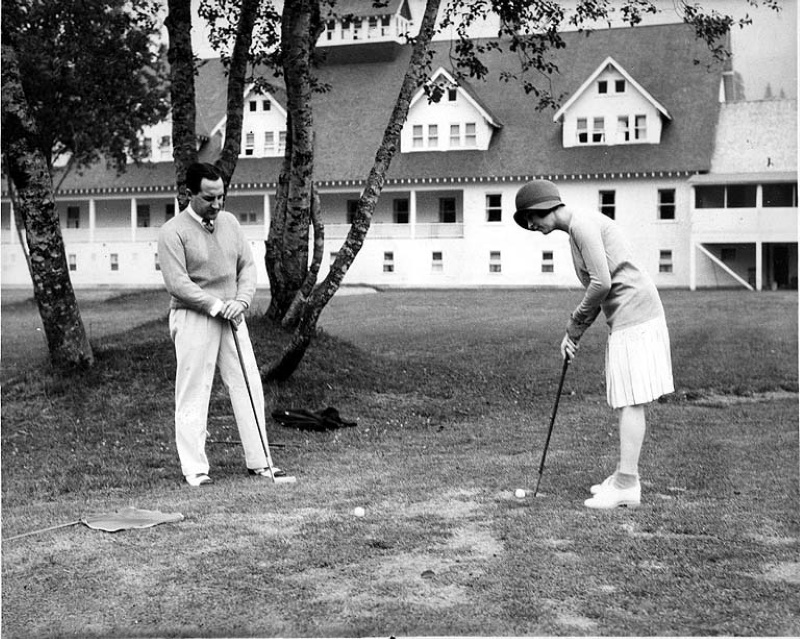 |
| Country Club Living 1922, Washington |
The Great Gatsby, which was set in 1922, is often referenced as the best representation of what life in 1920s America was like. Author F. Scott Fitzgerald’s novel captures the decay masked by decadence, where advertising and new media papered over the political and civil strife, he painted a picture of an American where new money didn’t need to explain where it came from, and long-held cultural values were being discarded in favor of hedonistic pursuits.
The Teapot Dome scandal was in the news highlighting what might be called “crony capitalism” today. Secretary of the Interior Albert Bacon Fall had leased oil-producing lands held for strategic military reserves to two big oil companies, the terms were very favorable and technically legal. What wasn’t legal was the bribes he took. Which would amount to over $7 million dollars today, paid to Secretary Fall for facilitating the no-bid contracts. The headlines from the day read like a detective novel, with investigating senators finding their offices ransacks, hired privet-eyes intimidating the jury, and a wealthy oilman who unsurprisingly gets a slap on the wrist. Ultimately, years later, Secretary Fall would be found guilty and be the first cabinet member to go to prison for his actions while in office.
The US Supreme Court heard arguments to overturn the Nineteenth Amendment, which granted women the right to vote in 1919. The case of Leser v. Garnett was brought by Oscar Leser, who sued to have all women removed from voting rolls in Maryland claiming that the Maryland constitution stated only men could vote. The court would uphold voting rights for women, while Leser might have set out to block women from voting, losing his case enshrined it nationally and made sure women across the US could exercise their right to vote.
Censorship boards had been created at the city and state level since the advent of moving pictures, movie studios fearing that congress would soon pass federal regulations, formed an industry lobbying group the
Motion Pictures Producers and Distributors Association, in 1922. Republican lawyer and former US Postmaster General Will H. Hays headed the organization and derailed federal censorship over the film industry. Cities and states still imposed bans on films for everything from nudity to the depiction of chewing tobacco, but eventually, most of these bans were overturned.
 |
| Black Nationalist Leader Marcus Garvey, 1922 |
Racial tensions are high in the US, 1919 and 1921 saw the devastating
Chicago Race Riots and the
Tulsa Race Massacre, a resurgence of the Klan had led to several high profile lynchings across the south, and the pseudoscience of Eugenics is being used to justify segregation, miscegenation laws, and anti-Semitism. The response was a rise in black nationalist and Pan-Africanism movements that promoted a “Back-to-Africa” policy or the creation of an African American ethnostate. This created some strange alliances with black nationalist leader Marcus Garvey holding meetings with Edward Young Clarke, the imperial wizard of the KKK in 1922. It would not be the first or last time that the two factions worked together to promote a pro-emigration agenda.
The early 1920s would also see the expansion of the Harlem Renaissance which started in the early 1910s. By 1922, over 300,000 African Americans from the South had moved north and Harlem was the primary destination. Claude McKay’s poem
Harlem Shadows, published in 1922, as well as works by W.E.D. Du Bois, Jessie Redmon Fauset, and many others explored African American culture and found publication in major magazines like Harper’s.
Jazz, a signature feature of the Roaring 20s, also found its footing in Harlem, with legends like Duke Ellington, Bessie Smith, Fats Waller, and Louis Armstrong all playing at clubs including the controversial Cotton Club which catered to white guests. While many in the community despised the idea of performing for white audiences but not being able to share a table, others saw it as a way to build bridges and share black culture.
1922 would also see the graduation of
Aaron Douglas, who has been called “the Father of Black American Art,” from the University of Nebraska, Lincoln. After moving to Harlem, Douglas would produce illustrations for leading African American magazines like
The Crisis and
Opportunity. He is most known for his mural series “Aspects of Negro Life” and he would go on to found the art department at
Fisk University.
Despite many Black Americans finding success in Harlem and other parts of the US, the promises of the Declaration of Independence took 188 years to apply to all Americans when the Civil Rights Act of 1964 finally passed ending institutionalized segregation.
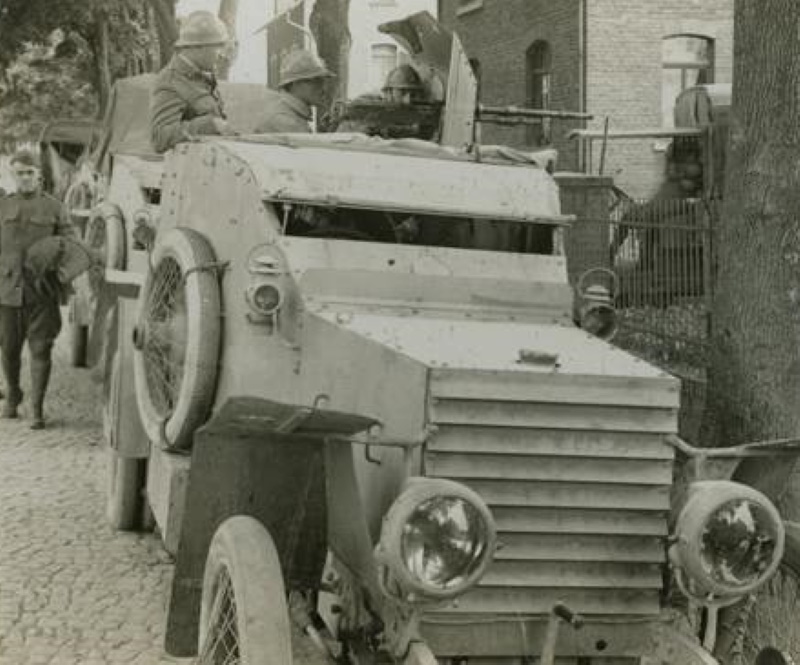 |
French and US Troops Montabaur Germany
|
While the US was relatively peaceful in 1922, the world was in turmoil, the lingering effects of the Treaty of Versailles made Germany’s Weimar Republic a dangerous place for government officials as a cold civil war with the Freikorps turned into a hot one. Over 345 politicians and bureaucrats would be murdered in the struggle between left and right for power. The rise of new parties in Germany leads the
New York Times to publish the first international story about an up-and-coming political figure in Germany, Adolf Hitler, the story “
New Popular Idol Rises in Bavaria” downplays Hitler’s anti-Semitic rhetoric as simply a political ploy.
Germany is ripe for extreme politics as hyperinflation sees the German Mark fall to an exchange rate of 7,400 marks per US Dollar. In an attempt to pay off war debts Germany began mass printing banknotes, using them to buy foreign currency, which was intern used to pay war reparations. After Germany fails to make a payment to France in late 1922, French and Belgian troops are sent to occupy parts of Germany’s industrial regions and collect payment in the form of goods. The constant printing of paper money saw almost no end, a loaf of bread that cost around 160 Marks in late 1922 would end up costing 200,000,000,000 Marks just one year later.
 |
| Burning Communist Papers in the Streets of Rome |
In Italy, the Autodromo Nazionale di Monza, one of the world’s first purpose-built motorsport race tracks opens, a highlight for Europe that would be overshadowed just weeks later by the March on Rome demonstrations. Almost 30,000 fascists would march on the capital, with blackshirts having taken over most of the country, King Victor Emmanuel III fearing all-out civil war, handed power to Benito Mussolini and his National Fascist Party, making him prime minister.
Rooted in nationalism with the goal to restore Italy to the glory of ancient Rome, Mussolini promised to make Italy the dominant power in Europe. Mussolini’s popularity among the people was bolstered by improving relations with the Papal State and forming an alliance with Catholic political party Partito Popolare Italiano, in 1922. Eventually, Roman Catholicism was declared the State religion of Fascist Italy. Despite embracing the church, once in power the fascists began purging their political enemies, the most notorious of these attacks was the
Turin Massacre where as many as 24 people were publicly executed.
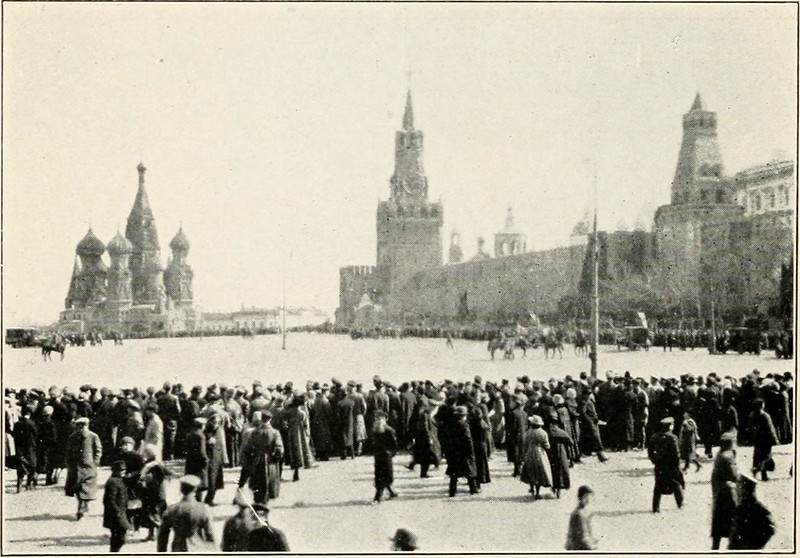 |
| Moscow, 1922 |
The Russian civil war is still raging, Josef Stalin is named the General Secretary of the Central Committee of the Soviet Communist Party, Vladimir Lenin distrusts Stalin and would push to have him removed from leadership. Political rivals, the Mensheviks and Socialist Revolutionary Party, are being removed from government positions and sent to concentration camps consolidating leaving one party to rule the Soviet Union.
As a way to possibly fund famine relief, the party begins confiscation of church property in 1922, executing priests and church officials who oppose the seizer. Archbishop Andronik of Perm was shot after being forced to dig his own grave, Bishop Germogen of Tobolsk, was strapped to the paddlewheel of a steamboat and torn apart by the blades. Those who escaped death were sent to the Solovki Camp of Special Purpose, which was opened in 1922. It is estimated that during an 18 year period over 130,000 Russian Orthodox priests were arrested with the majority being put to death, with over 8,000 being killed in 1922 alone.
Famine relief would come thanks to US aid under the American Relief Administration (ARA), U.S. Commerce Secretary Herbert Hoover, who would later go on to become President, “we must make some distinction between the Russian people and the group who have seized the government.” By 1922 the ARA was feeding 10 million people and providing medical care for 500,000 Russians every day. Almost by accident, the
United States saved what would become the USSR, its largest geopolitical rival from complete collapse.
By December, the consolidation of power was complete, on a stage of Moscow’s Bolshoi Theater, representatives of the Russia, Ukraine, Belarus, and the Transcaucasian Republic governments announced the formation of a new country, the Union of Soviet Socialist Republics. The USSR was born in 1922.
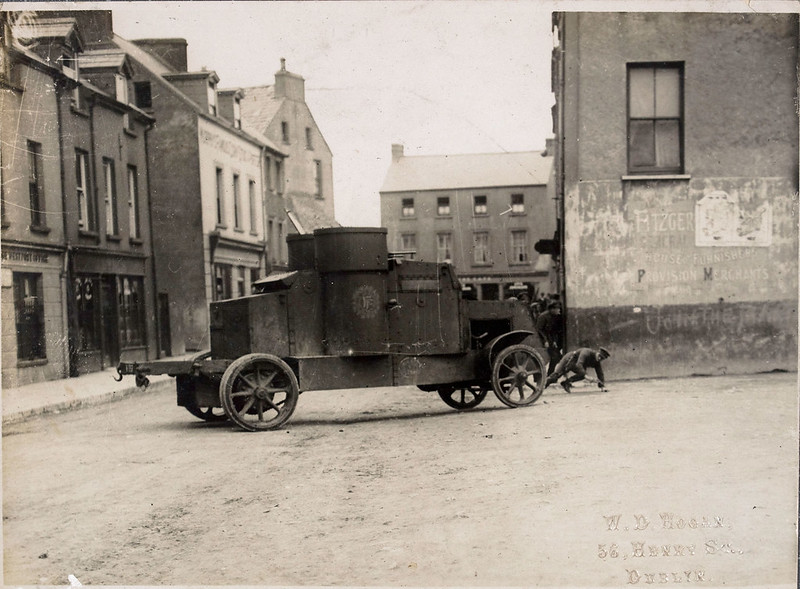 |
| British Armored Car, 1922 |
The Ottoman Empire comes to an end in 1922 after 623 years of expansion and conflict. At its largest it controlled the entire eastern and southern coasts of the Mediterranean, stretching from Eastern Europe, through the Middle East, and dominating the coastline of North Africa. The eventual downfall of the Ottoman Empire began with the Young Turk movement, which restored electoral law but also lead to a weakening of the central government creating civil conflict between ethnic and religious factions. Bulgaria, Greece, Montenegro, and Serbia would all win their independence not long after the return of democracy. Following their defeat in WWI, the Ottoman Empire was occupied and partitioned, but Sultan Mehmed VI would remain in power.
The Sultan retaining the throne sparked the Turkish War of Independence, led by
Mustafa Kemal Atatürk, who lead a nationalist movement that was opposed to the Ottoman Empire, Allied powers, and Christian minorities. While all one movement, effectively the Turkish National Movement was fighting Greek and British forces in the Greco-Turkish War to the west, a war with the Bolshevik forces in the east, and the French in the Franco-Turkish War to the south. All with the hopes of establishing an independent Turkish state. The Armistice of Mudanya would be signed in October 1922, one year later the Republic of Turkey would be officially be created.
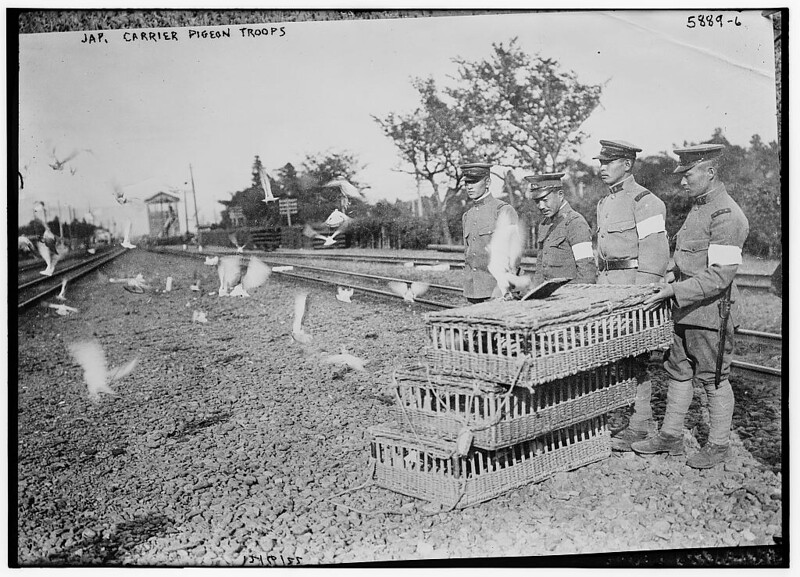 |
| Japanese Carrier Pigeon Troops, 1922 |
On the other side of the world, Japan has been supporting anti-communist forces against the Bolshevik Red Army in what is known as the Japanese Intervention in Siberia. Japan would eventually withdraw from all Russian territory in October 1922, with the exception of the Northern portion of Sakhalin island, which Japan claimed as reparations for the Nikolayevsk incident of 1920. Japan would be driven completely from the island until the end of WWII. At home, the Japanese Communist Party was formed in 1922, the party was quickly driven underground and eventually outlawed a few years later under the Peace Preservation Law.
Japan was also facing growing unrest in Korea, which it had annexed in 1910, this was exacerbated by the
Shinano River incident in July 1922, where it is believed that up to 100 Korean laborers were massacred when trying to escape the construction site. Their bodies were dipped in concrete and thrown into the river. Yomiuri Shimbun, a conservative newspaper in Tokyo, broke the story when bodies began washing up downstream, causing uproar from both Korean and Japanese citizens. As a result, the Tokyo League of Korean Labor and the Osaka League of Korean Labor was formed in late 1922.
In China, warlords battled for control of Beijing in the First Zhili–Fengtian War, which lasted just two months, Wu Peifu and his Zhili clique would rule the First Republic of China until a 1924 Coup. This era of Chinese history is known as the Warlord Era, as up to sixteen different factions existed in the span of a decade. Warlords would remain a problem for the central government until the 1949 communist victory. The Chinese Nationalist Party form an alliance with the Chinese Communist Party under Sun Yat-sen. Chiang Kai-shek, as a leader in the Nationalist Party, is sent to Moscow to discuss Russian aid in combating the warlords and reunifying China. While in Russia Chiang develops a mistrust for the communists as Russia is unwilling to fund any military action in the north of China. Eventually, Russia supports the establishment of the Whampoa Military Academy to train a modern military force.
 |
| Manchuria, School circa 1919-1922 |
1922 also marks the start of the Anti-Christian movement in China with the founding of the
Anti-Christin Student Federation in Shanghai, created as a response to the hosting o the World Student Christian Federation hosting its conference at Tsing Hua College in Peking. This coincided with the publication of a study called
The Christian Occupation of China, the same year. The study was intended to be a guide to outline the transfer of churches from foreign missionaries to Chinese Christians, but the title sparked protests and civil unrest for the next several years until
Chiang Kai-shek’s baptism in 1929.
In South America, the Paraguayan Civil War started when presidential elections were canceled by President Eusebio Ayala, and the opposition party known as Schaererists attempted to overthrow the government. While the battles were fairly small, it is reported as the first time that military aviation was used in combat in South America. The war would last just over a year, with the revolutionaries finding defeat.
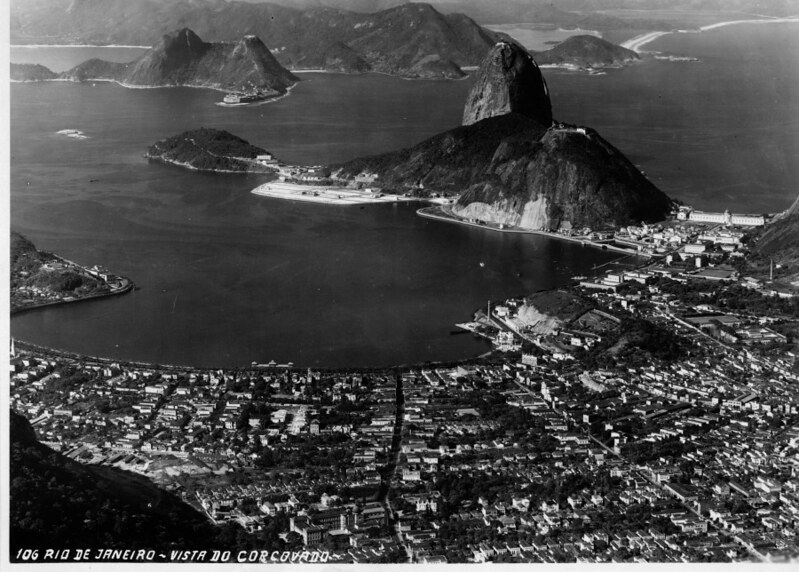 |
| Rio de Janeiro, 1922 |
In Brazil, the first revolt in what would be known as the Tenente Movement was sparked by a group of young Brazilian Army officers who attacked Fort Copacabana in Rio de Janeiro with the goal of preventing Arthur da Silva Bernardes from assuming the presidency. The movement was sparked by what many considered a corrupt oligarchy, this first action would eventually lead to the Brazilian Revolution of 1930, which ended the First Brazilian Republic. In São Paulo, the first Modern Art Week was held in early 1922, the event marked the start of Brazilian Modernism and catapulted many artists to international prominence, the event however was controversial in ultra-conservative São Paulo.
In the city of
Guayaquil, Ecuador trolley and public utility workers launched a three-day general strike, demanding pay increases, shorter hours, safer working conditions, and regulation of foreign currency exchange rates. The workers were emboldened by the recent successful strike by railway workers in the city of Durán. 20,000 people took to the streets in solidarity with the workers and marched to a police station where two union leaders were set to be released. The military was in place, bayonets fixed, and as the crowd approached they began firing into the crowd. The protestors began to flee but were pursued by troops who continued to shoot and stab protestors. The result was around 300 dead, countless injured, soldiers, and police suffered no causalities. The following week the president met the worker’s demands.
 |
| Beauty contest winners at the Venetian Pool in Coral Gables, Florida |
Obviously, this is just a fraction of all that happened in 1922, like any year there were highs and there were lows. Headlines today could be pulled directly from the stories of 100 years ago, political strife, civil unrest, calls for censorship, there was even a story published in the October 1922 issue of Monthly Weather Review that warned of the warming ocean melting arctic ice.
This story isn’t meant to discourage you, this world is amazing and full of wonders that we should all try to experience in our limited time on this planet. But don’t lose too much sleep at night, generations before us have faced what we have faced and endured, so we can too.
Post Views: 382









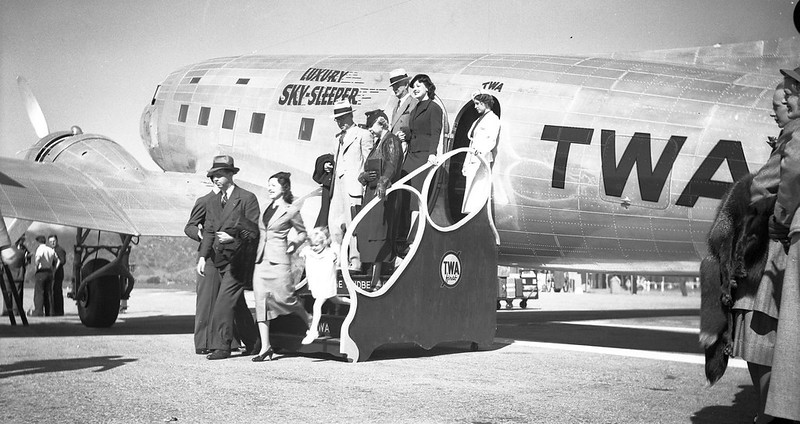




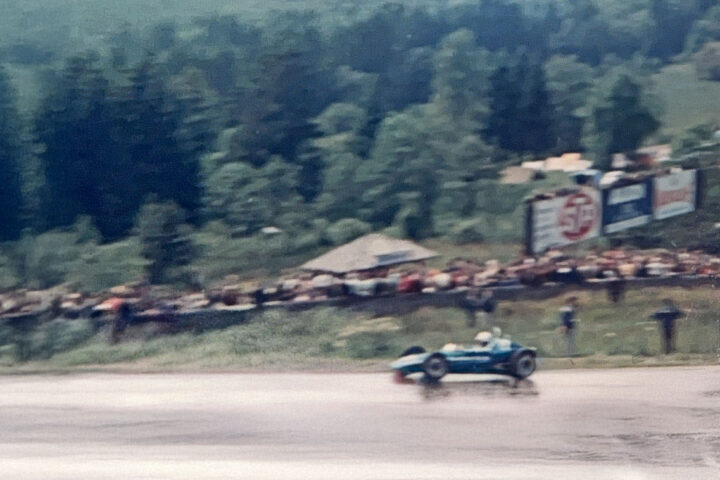
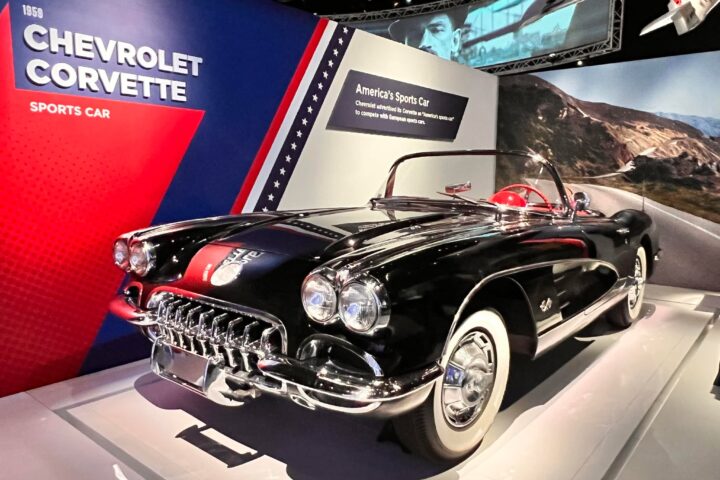
















Found your site by google, learned a lot, so much stuff we think we know